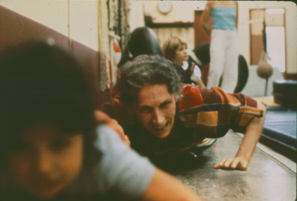Terminology

1.What is occupational therapy?
Occupational therapy helps you live your best life at home, at work – and everywhere else. It’s about being able to do the things you want and have to do. That could mean helping you overcome challenges learning at school, going to work, playing sport or simply doing the dishes. Everything is focused on increasing independence and wellbeing.
It’s also a science-based, health and social care profession that’s regulated by the Health and Care Professions Council.
2. What does an occupational therapist do?
An occupational therapist helps people of all ages overcome challenges completing everyday tasks or activities – what we call ‘occupations’.
Occupational therapists see beyond diagnoses and limitations to hopes and aspirations. They look at relationships between the activities you do every day – your occupations – alongside the challenges you face and your environment.
Then, they create a plan of goals and adjustments targeted at achieving a specific set of activities. The plan is practical, realistic and personal to you as an individual, to help you achieve the breakthroughs you need to elevate your everyday life.
This support can give people a renewed sense of purpose. It can also open up new opportunities and change the way people feel about the future.
3. Who do occupational therapists work with?
Occupational therapists work with adults and children of all ages who have a wide range of conditions.
Most commonly, they help those living with mental health conditions, or physical or learning disabilities. And you’ll find them helping people live their best life in health organisations, social care services, housing, education and voluntary organisations.
Many occupational therapists practice independently too and work with members of the public, asylum seekers and refugees, alongside the police or fire services, or with psychiatric services.
Source: https://www.rcot.co.uk/about-occupational-therapy/what-is-occupational-therapy
4. The Role of the Paediatric Occupational Therapist
Our Occupational Therapists play a significant role in helping a child and the family to adapt to the challenges imposed on everyday life by a physical, psychological or learning disabilities, including:
· providing support to identify the most appropriate nursery, school or college placement supporting housing projects including working with architects on major and minor adaptations
·identifying equipment to maximise independence leisure and learning opportunities
·facilitating access to a wide range of leisure opportunities
·recognising that older children have unique needs, different experiences and aspirations
·implementing packages of therapy to maximise the young person’s abilities and opportunities
·working with the young person and their wider team as necessary to develop compensatory strategies for organisational and planning challenges
·teaching independence in living skills including personal care, domestic and financial / community management needs
Source: https://www.thesensorysmartchild.com/
5. About Ayres Sensory Integration®




Ayres Sensory Integration® (ASI) is a well-established and growing area of therapeutic practice with applications in various settings including the home, school, and community. Developed by A. Jean Ayres, PhD, OTR, FAOTA, an occupational therapist, psychologist, and neuroscientist, this framework was originally shown to be effective with children with learning and behaviour difficulties and has since emerged as an evidence-based practice for use with children with autism. Applications have been broadly applied with individuals with a variety of disabilities and age groups. ASI is trademarked to help researchers, therapists, and parents identify the core principles which define ASI and to differentiate this evidence-based intervention from other approaches which may use some aspects of sensory-based activities, but do not meet the criteria for ASI.
Sensory integration theory provides evidence from basic and applied science about the ability to receive, sort, process, and make use of the information originating from the body and the environment and perceived by our senses (touch, gravity, body position and movement, sight, smell, hearing, taste). This sensory information goes to the brain, where it is organized and interpreted. As a result, we form a plan of action that allows us to have an adaptive response appropriate for the demands of the environment. A thorough assessment guides the preparation of goals addressing the referring concerns and the recommendations for intervention. Ayres Sensory Integration® intervention is provided within the context of professional practice. It is designed to improve sensory perceptual abilities, self-regulation, motor skills, and praxis. In doing so, it supports the client’s ability to show improved behaviour, learning, and social participation. Classic intervention is provided in a specialized therapy room with sensory equipment that provides tactile, visual, proprioceptive and vestibular opportunities in a structured manner in collaboration with the primary caregivers.
Sensory integration difficulties are found in individuals with no diagnoses as well as infants, children, and adults with identified diagnoses. This therapy has been found effective with problems such as learning difficulties, hyperactivity and attention deficit, dyspraxia, and autism. In the course of the therapy, the individuals learn skills or specific behaviours. However, these are not the main objective. Instead, the intention is that the physical activities produce sensations that lead to adaptive responses, and consequently, to even more complex responses. In the case of children the intervention is centered in play, allowing the construction of sensory experiences and the planning of actions in relation to guided and growing challenges.
For most children, Sensory Integration develops in the course of ordinary childhood activities but for some children (as many of 5-10%) Sensory Integration does not develop as efficiently as it should, this is known as Sensory Processing Disorder (SPD).When the process of integrating sensation is disordered, a number of problems in learning, motor skill development and behaviour may be evident. A child may be oversensitive to noise or touch. They may seek movement or appear to be ‘on the go’ all the time. Children with SPD require specialist support to enable them to manage and mature their sensory systems. This is where we can help. We have a range of sensory therapies specially designed to improve and support your child.
Source: www.cl-asi.org
6. What is a Sensory Diet
Our brain, through our senses, needs a balanced diet in order for us to be able to make sense of and function in the world we live. This is a sensory diet.
We need to experience a variety of sensations each and every day in order to keep our brain energised, organised, alert or calm.
With a regular, balanced sensory diet we are better prepared to respond appropriately to the demands of the world we live in.
When children are having difficulties with self-regulation, adults may need to assist them to find the right type of activities to attain the appropriate level of alertness for their situation.
In order for children to focus their attention, their bodies need to be in an appropriate state of “calm alertness”. If they are not in an appropriate state of calm alertness, their attention may be directed towards the wrong cues.
A balanced sensory diet will help children maintain appropriate levels of alertness.
A balanced sensory diet helps organise a child’s senses so that they can carry out activities to the best of their ability. After being introduced to particular sensory activities by parents or teachers, children may begin to use these activities themselves when they need to change their alertness levels.
For changes to occur in a child’s sensory system, the sensory diet must be carried out CONSISTENTLY and as directed.
Changes usually take between 6 - 8 weeks to occur but once they do, they can greatly improve the child’s attention and functioning.
Key points to remember:
1. CREATING A SENSORY RICH ROUTINE
• Become a detective and observe the child’s behaviour across the day and their responses to the sensory input.
• Be proactive rather than reactive. Sensory input should be offered to children as part of their everyday routine and not just when it appears they require the additional sensory input to feel organised.
• Keep track of progress and contact your Occupational Therapist should you have any questions – we are here to help!
2. SENSORY BREAKS
• Most children will benefit from participating in a sensory break a minimum of five times per day. For example: before school, at transition times during the school day (e.g. when starting the first lesson, after morning break and after lunch) and then once in the afternoon/evening at home. 10-15 minutes at a time is recommended.
• The intensity of the work and the duration of the effort often needs to be a lot higher and longer than we imagine. Activities may appear simple on the surface but can have a long-lasting effect on behaviour. For example, it has been reported in research that even 5 to 10 minutes of an activity that involves the whole body in heavy muscle and joint movement can have an effect lasting up to 2 hours.
• Children may need sensory diet “top ups” throughout the day, particularly if they have not slept well, if there has been lots of sitting down during the day, or if they seem particularly active, disorganised or distracted. At these times they may only need to do something from the programme for two minutes, or alternatively a short movement break such as running an errand for the teacher.
